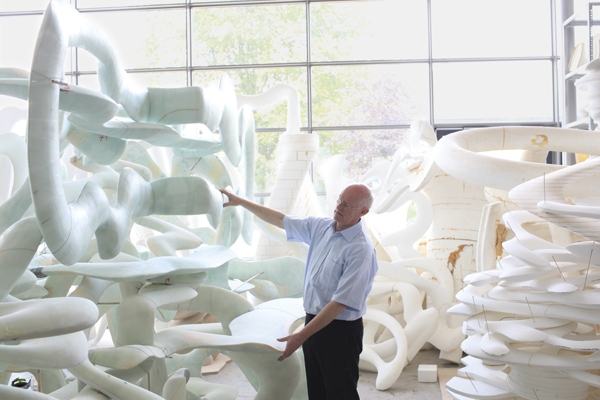The question of what artists actually get up to in their studios has always intrigued the rest of us — that mysterious alchemical process of transforming base materials into gold, or at least into something marketable in the present volatile art world. Today’s studio might as likely be a laptop as laboratory, factory, hangar or garden shed, but is nevertheless an apt prism through which to explore the notion of creativity, and this boldly ambitious volume does just that, interviewing 120 British artists in a freewheeling way about their practice and process, inspiration and ideas.
Sanctuary pays tribute to Private View, that inimitable portrait by John Russell, Bryan Robertson and Lord Snowdon of the 1960s British art scene, which was in those days still possible to encompass in vibrant detail in a volume of reasonable dimensions. Since then things have spiralled almost out of control, and Sanctuary dispenses with the curators, critics and connoisseurs that stalk its predecessor’s pages, to focus on a somewhat idiosyncratic selection of artists.
Not all Private View’s still practising subjects have made it into the present volume, and Richard Cork contributes a disarming account of bearding some of the bigger beasts of that generation in their lairs. There are still notable omissions — Frank Auerbach for one — who evidently backed off at the last minute, citing superstition as an excuse for barring entry to his one-room sanctum in Camden Town. And what of uber-artist Damien Hirst, at the other end of the spectrum, with his humming factories of assistants spooling out new works?
But those who agreed to be put on the spot, whether veterans like Sir Anthony Caro and Gustav Metzger or the young taxidermist Polly Morgan, are illuminating and often revelatory about their work, their ideas and their lives. Pick your artist — this is not a book to read from cover to cover — and you will enter a snapshot of their world, direct, raw and intensely visual.
For, rightly in a book about the making of art, the images are superb: the photographer Robin Friend may have hitherto focused on landscape, but he has captured the artists at work and at play as vividly as the spaces they inhabit. Indeed, the studio often provides a wry visual metaphor for the artist’s oeuvre: the chapel where David Nash fashions his wooden creations sprouts like a petrified forest, while Antony Gormley’s ‘asylum’, as he calls it, reads as a cross-section of the ideas hatching in his brain.
In the end, whatever new shapes and forms the physical studio may take in the digital age, it remains the crucible of creative endeavour, a place where dreams and ideas are clothed in shape and form — on which subject, perhaps Caro should have the last word. When asked if he still dreamed of Picasso he replied, ‘I stopped, after I had a long conversation with his ex-wife. That cured me a bit. I understood him better.’






Comments